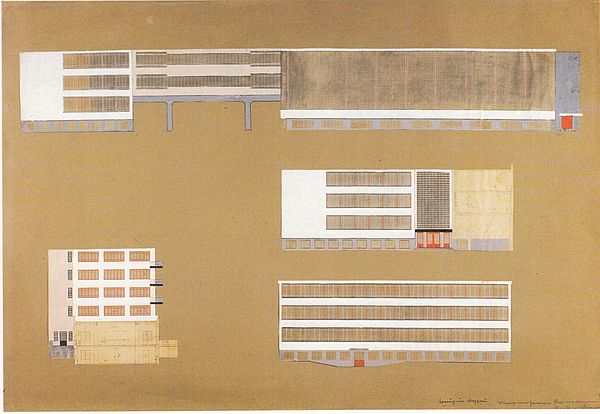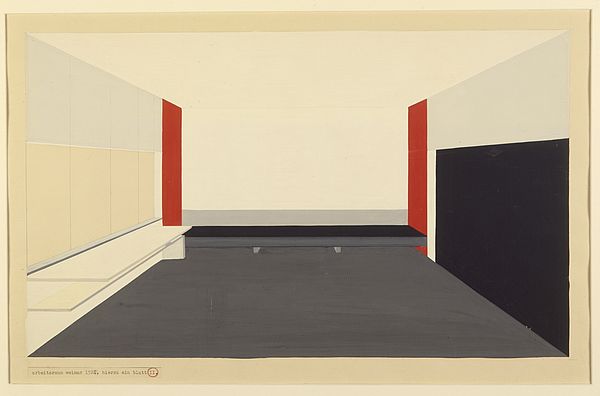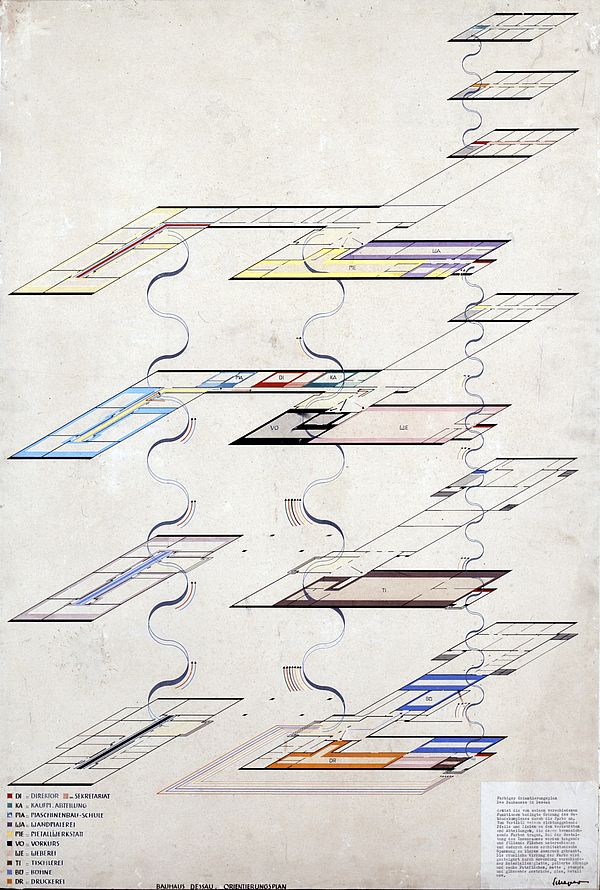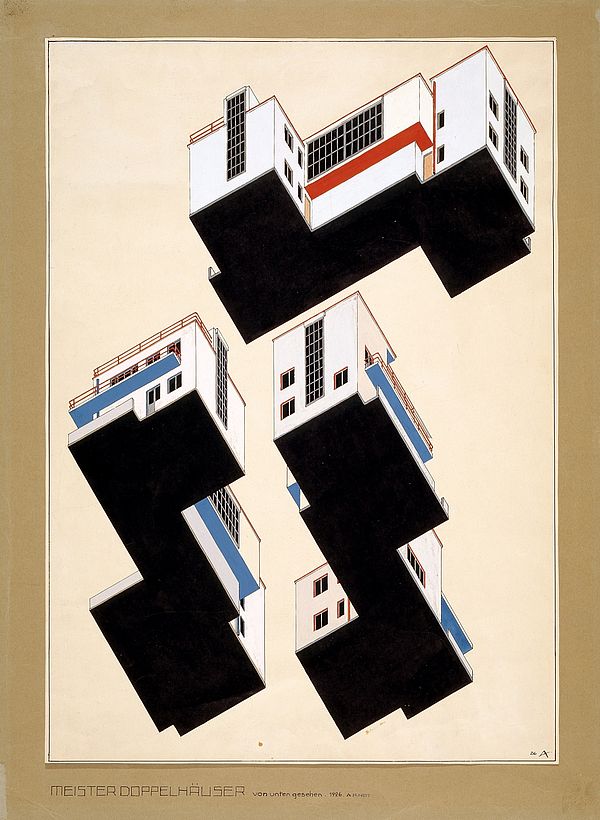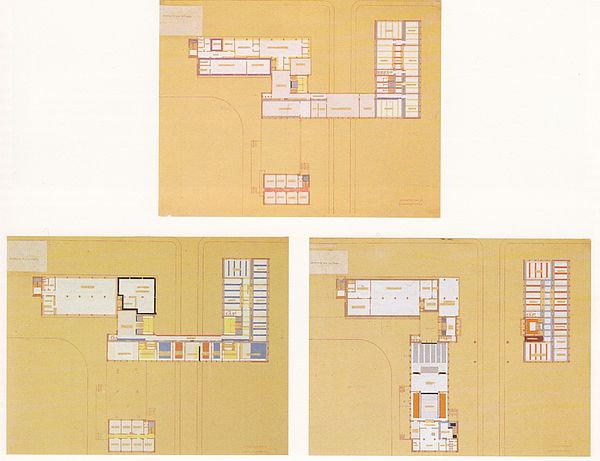Wall painting
1920–1933 (from 1929 fitting-out workshop)
Students in the wall painting workshop designed and implemented many murals, reliefs and colour schemes. The most successful product from the workshop was the Bauhaus wallpaper produced from 1930.
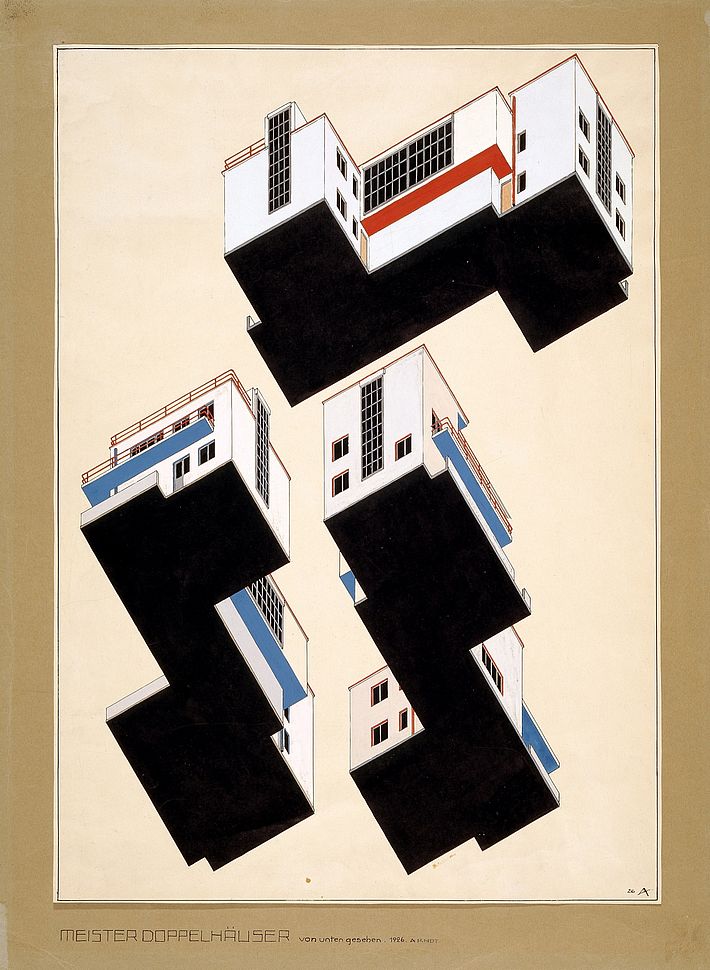
Masters and Teachers
Johannes Itten
Oskar Schlemmer
Wassily Kandinsky
Hinnerk Scheper
Alfred Arndt
[Translate to English:] HEADLINE
The early works of the wall painting workshop – which was first directed by Johannes Itten, followed by Oskar Schlemmer and Wassily Kandinsky from 1922 to 1925 – included the colour design of toys, furniture and architecture. Due to a lack of other commissions, the first architecture-related assignment of the workshop was the painting of the hallways and refectory in the Bauhaus building in Weimar according to designs by Itten. Various projects were implemented for the Bauhaus exhibition of 1923: For the workshop wing of the Bauhaus, Oskar Schlemmer designed figure reliefs and wall paintings that explored the topic of the “human being” or “types of movements”. Wassily Kandinsky had the range of courses, including aspects of craftsmanship and the psychological effect of colours – documented on the walls of the workshop rooms. Some of the students also designed selected areas of the art school building, employing a variety of techniques. The wall pictures by Herbert Bayer in the side stairway of the main building as well as the colourful wall décor at the Haus am Horn by Alfred Arndt and Josef Maltan were also created in this context.
The Masters’ Houses in Dessau designed by Gropius were individually decorated according to the colour concepts that the masters developed for their respective houses. From 1925 to 1933, Hinnerk Scheper was the head of the wall painting workshop where he had previously received his training. He placed value on not allowing colour to dominate as a design element, instead allowing its application to be governed by the architecture. For him, the colours should reflect the functions of the architectural elements.
Headline
The use of colour as a guidance and orientation system was another starting point for Scheper, who lived in Moscow from 1929 to 1931. He developed an advisory centre for his field of expertise and managed a design office while he was here. During Scheper’s absence, Alfred Arndt took over as head of the wall painting workshop. Although the Bauhaus was very critical of the use of wallpapers, the company Rasch of Hanover won an exclusive contract with the school in 1929. The decisive argument here was that the use of industrially produced wallpapers ensured an economical and contemporary wall design in housing developments. The students’ designs for the most successful standardised Bauhaus product were based on insights into structures and the interactions of surfaces and colours gained in the workshop for wall painting.
